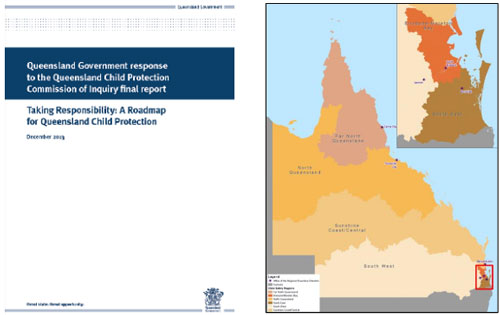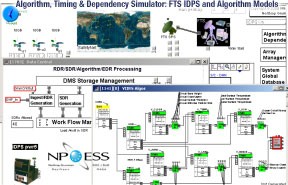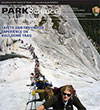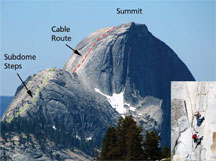Government agencies, departments, and consultants working with the government are discovering simulation is an indispensable tool to help guide them to the best decisions. And ExtendSim has been there to help them every step of the way.

Reengineer
Reserves
ExtendSim has been used to reengineer the DOE Strategic Petroleum Reserve. The model created helped reduce expenses, decrease need-fulfillment time, and improve the storage and dissemination of information.
Battelle, in conjunction with the Center for Disease Control, developed a discrete event simulation model using ExtendSim to evaluate how retail pharmacies affect the influenza vaccine administration capacities in a pandemic.

Public Policy
Analysis
An ExtendSim model showing constraints and potential options for cargo shipments in main terminals has helped National Oil Companies in Venezuela design a formal policy framework for the development of local services and manufacturing industries in the oil industry.

Procedural
Optimization
New York City conducted a large-scale study of the criminal justice system's arrest and arraignment procedures. As a result of implementing the recommendations from an ExtendSim model, NYC virtually eliminated its lengthy arraignment delays and saved tens of millions of dollars.
Government & Public Sector Usage of ExtendSim
- Help manage use of government funds.
- Sustainability and traceability.
- Policy analysis.
- Modernize infrastructure by consolidating administrative and support services.
- Optimization of traffic signal timing to reduce traffic congestion.
- Modeling public health hospital and emergency medical services.
Who is Using ExtendSim
 FDI Operations Modeling & Simulation created a single model that simulated different prison healthcare systems. The GSDB was used to contain the data specific to each facility. Changing the model to a new prison only required importing a different database. They were able to efficiently simulate over 350 different scenarios eventually developing a new process which was superior to the current processes at all of the modeled prisons.
FDI Operations Modeling & Simulation created a single model that simulated different prison healthcare systems. The GSDB was used to contain the data specific to each facility. Changing the model to a new prison only required importing a different database. They were able to efficiently simulate over 350 different scenarios eventually developing a new process which was superior to the current processes at all of the modeled prisons. In 1993, The Federal Aviation Administrations' (FAA) groupware Team Technology Center pioneered the use of ExtendSim in conjunction with groupware. Using both tools, they collected data and built models to reengineer human resources support processes in near real-time. Consultants Coopers & Lybrand developed a powerful process visualization technique that allowed client team members to actively participate in model development and validation. ExtendSim enabled the redefinition of the FAA's entire simulation service delivery capability - a crucial element in their business process reengineering practice.
In 1993, The Federal Aviation Administrations' (FAA) groupware Team Technology Center pioneered the use of ExtendSim in conjunction with groupware. Using both tools, they collected data and built models to reengineer human resources support processes in near real-time. Consultants Coopers & Lybrand developed a powerful process visualization technique that allowed client team members to actively participate in model development and validation. ExtendSim enabled the redefinition of the FAA's entire simulation service delivery capability - a crucial element in their business process reengineering practice. The University of Tulsa develops novel models and computational methods that are capable of predicting the impact of R&D and capital investment decisions (how much to invest and in which technology and when) on the evolution of biomass conversion technologies for feedstock development for the chemical process industry.
The University of Tulsa develops novel models and computational methods that are capable of predicting the impact of R&D and capital investment decisions (how much to invest and in which technology and when) on the evolution of biomass conversion technologies for feedstock development for the chemical process industry. The net-centric logistics (NCL) land platform model simulates the logistics of an US Army’s battlefield including all of the platforms, personnel, logistics, and supplies needed to support a heavy armor company. The model specifically includes spare vehicle parts as well as commodities (food, fuel, water, ammunition). It enables the customer to determine the benefits and explore the implementation of NCL concepts during a wartime deployment. The model also allows for the identification of potential logistics bottlenecks and the measurement of a unit’s platform availability and resource consumption.
The net-centric logistics (NCL) land platform model simulates the logistics of an US Army’s battlefield including all of the platforms, personnel, logistics, and supplies needed to support a heavy armor company. The model specifically includes spare vehicle parts as well as commodities (food, fuel, water, ammunition). It enables the customer to determine the benefits and explore the implementation of NCL concepts during a wartime deployment. The model also allows for the identification of potential logistics bottlenecks and the measurement of a unit’s platform availability and resource consumption. Boeing's Depot Process Model simulates a wide variety of maintenance depot setups and configurations, starting from the same generic model. The model processes and logically controls the movement of vehicles through a depot according to variable task requirements and the availability of resources (personnel, support equipment, parts, and physical space).
Boeing's Depot Process Model simulates a wide variety of maintenance depot setups and configurations, starting from the same generic model. The model processes and logically controls the movement of vehicles through a depot according to variable task requirements and the availability of resources (personnel, support equipment, parts, and physical space).  As data from an actual depot operation is applied to the model, it will assist with the identification of process improvement opportunities which will improve vehicle throughput capacity and platform (tank, aircraft, etc.) availability.
As data from an actual depot operation is applied to the model, it will assist with the identification of process improvement opportunities which will improve vehicle throughput capacity and platform (tank, aircraft, etc.) availability.- Modeling of discrete operational events that could impact the logistic support ramifications of unmanned aerial vehicle availability.
- Refugee Relief simulation setting both staffing schedules and triage policies in a health care setting at a refugee camp in Croatia.
Case Studies
Rob Brownie
Insight Acumen
2023
See this case study for a Child Protection Simulation Analysis Model built using ExtendSim. It was initially built in 2013 after the Queensland Child Protection Commission of Inquiry and in 2023 is now in its fifth major iteration.
For more customer and concept models, or more on Insight Acumen, visit www.insightacumen.com.au.
Rob Brownie
Insight Acumen
2020
Check out this stock and flow model built in ExtendSim that forecasts demand for early intervention, child protection and out-of-home care (OOHC) services at the State level. The primary use was to project the OOHC population for use in a separate expenditure projection model.
For more customer and concept models, or more on Insight Acumen, visit www.insightacumen.com.au.
J. F. Krupa, R. A Dimenna, and B. J. Hardy
Westinghouse Savannah River Company
The Savannah River Site (SRS) deals with dispositioning a substantial quantity of the nation’s plutonium. An effort was initiated over a decade ago to model plutonium processing and storage to present to Congress and the Defense Nuclear Facility Safety Board an optimum option for plutonium management in the Nuclear Weapons Complex.
Along with efforts to develop information using spreadsheets, a plutonium disposition and storage model was developed using Extend. ExtendSim was chosen for this task because its hierarchical nature allowed development of a modular model which was easy to explain and understand. The power of the discrete event modeling approach was observed when adding shipping and process schedule logic, determining bottlenecks in the process, and making rapid changes to the model to assess the impact of different decisions.
The Institute for Operations Research and the Management Sciences
June 2012
In a strategic effort to prioritize enforcement and removal operations toward criminal aliens (those individuals illegally present in US with a criminal conviction), Booz Allen Hamilton began supporting Immigration and Customs Enforcement (ICE). Booz Allen’s implementation of analytics spanned three years and involved developing a set of models used to solve challenging problems such as forecasting the number of criminal illegal aliens, optimizing a technology deployment schedule, and minimizing the transportation costs of removal. The impact of the work resulted in a doubling of criminal alien removals, leading to greater public safety for the American people.
In addition, this Booz Allen project, “Enhancing Immigration Enforcement with Decision Analytics” won the Institute for Operations Research and the Management Sciences’ (INFORMS) inaugural Innovation in Analytics Award in 2011.
This project was selected by the INFORMS judging panel over almost 50 other entrants for its “creative and unique developments, applications or combinations of analytical techniques” and is that is was designed to “promote the awareness of the value of analytics techniques in unusual applications or in creative combination to provide unique insights and/or business value".
Learn more about how the combination of simulation and multidisciplinary experts can help government excel at achieving important mandates, such as making the country more secure.Presentation slides of the 2012 winning project from Booz Allen Hamilton can be found on the Analytics Section of the INFORMS website; however you must be a member of the section to view these slides. The Institute for Operations Research and the Management Sciences (INFORMS) is the largest professional society in the world for professionals in the field of operations research, management science, and business analytics.
Doug Shannon
Northrup Grumman Mission Systems
March 5, 2008
The Algorithm Timing and Dependency Simulation (ATDS) created within ExtendSim, simulates multiple orbiting weather satellites, data retrieval through global receptors, and weather product generation and distribution.
ATDS has been successfully used by NPOESS to size the architecture and evaluate cost/performance trades for more than a decade. It analyzes processing capacity and memory, evaluates architectural alternatives, and supports cost/quality/latency trades with its unique method of modeling weather science with chains of interdependent algorithms.
NOVA can be dynamically commanded to display satellite scan patterns by means of an IP-based text messaging interface. A custom "wrapper" Windows DLL, developed for the NPOESS program, allows the ExtendSim ATDS simulation to access Winsock functions, permitting messaging from ExtendSim to NOVA.
The combination of ATDS with NOVA, a visualization tool that supports 3D views of astronomical objects, has been used for system performance analysis and demonstrations on the NPOESS weather satellite program.
Substance Abuse Programs: Evaluating Cost Savings Achieved Through Enhanced Access to State Substance Abuse Programs
Justin Stowe, Heidi Zimmerman, Daniel McCarville, Meghan Flanders, and Leyton Gunn
Legislative Division of Post Audit, Legislature of Kansas
December 10, 2015
ExtendSim was used to evaluate whether the state of Kansas would save money by expanding substance abuse treatment. The project went well and the authors were invited to speak at NASACT 2017, a national auditing conference about their experiences with ExtendSim.
Optimizing Park Operations and Visitor Experiences Through Empirical Evidence
Bret Meldrum, Steve Lawson, Nathan Reigner, and David Pettebone
National Park Service • US Department of the Interior
Park Science • Spring/Summer 2012
In recent years as visitation has increased, numerous search-and-rescue incidents have taken place on and around the cables. This trend led park management to investigate visitor use on the trail system leading to Half Dome, including behaviors on the cables.
The Half Dome Trail (HDT) hike has long been the setting of an iconic experience in Yosemite National Park. The trail takes visitors up the only route accessing the summit without technical climbing. Over time, it has transformed from a historic multiday wilderness experience to an ambitious, and frequently epic, day hike. This 16-mile (26 km) hike ascending 4,000 ft. (1,219 m) is a significant undertaking that ends with the last 400 ft (122 m) of the ascent exposed and on a cables structure.
Dr. Lawson used ExtendSim to model visitor use measurement and monitoring of visitor movements to provide a basis for standards that frame acceptable conditions. Results are compiled in an article written by Dr. Lawson, Bret Meldrum, Nathan Reigner, and David Pettebone and published in the Spring/Summer 2012 issue of Park Science magazine.
Steve Lawson, PhD, Director, Public Lands for RSG Inc. has been using ExtendSim to model visitor use in national parks for over a decade; including models of visitor use at Yosemite, Mount Rainier, Isle Royale, and Rocky Mountain National Parks, Muir Woods National Monument, and the Inyo National Forest.
A Simulation Based Analysis of U.S. Army Watercraft Capabilities in a 2022 Foreign Humanitarian Assistance/Disaster Relief Operation
Paul Beery
Naval Postgraduate School
2011
This thesis utilizes the operational context established by Expeditionary Warrior 2010 (EW10), a United States Marine Corps operational level seminar planning game, to analyze a 2022 United States Army Watercraft Foreign Humanitarian Assistance/Disaster Relief (FHA/DR) Operation. The EW10 Wargame was conducted over four days and in order to ensure complete analysis of the entire scenario within the time constraints, the composition of forces was explicitly defined. This thesis considers the full range of possible force compositions. A full functional and physical architecture is developed, using EW10 as an operational basis. Corresponding Measures of Outcome, Measures of Effectiveness, and Measures of Performance for U.S. Army Watercraft FHA/DR Operations are defined. The current U.S. Army Watercraft Master Plan is used to develop a 2022 U.S. Army Watercraft Force Structure, to include the integration of the Office of Naval Research's Transformable Craft (T-Craft). A discrete event simulation is developed using the ExtendSim software to analyze the impact of variations in the projected force structure as well as the performance gains and losses associated with the introduction and removal of the T-Craft from the force structure. Simulation analysis indicates that, if the T-Craft is available in 2022, U.S. Army FHA/DR response forces should be defined by: 8 or more T-Craft, 4 or more Joint High Speed Vessels (JHSVs), and 4 or more Logistics Support Vessels. In the absence of T-Craft, the response force should be defined by: 7 or more JHSVs and 13 or more Landing Craft Utility 2000s.

Science and Policy Integration for Coastal Assessment
European Union Integrated Project
2007 to 2011
Four year project set up by the European Union. 54 partner institutes in 21 countries are using ExtendSim to study 18 coastal sites in the EU project SPICOSA. This project will assist Europe in its goal of achieving Sustainable Development by developing and testing a conceptual methodological framework for transition in coastal zones. The SPICOSA initiative originates from the fact that coastal systems are under increasing human pressure and policy has not been able to respond properly to the resulting negative impacts on ecological, social and economic systems.
SPICOSA's overall aim is to develop a self-evolving, holistic research approach and support tools for the assessment of policy options for sustainable management through a balanced consideration of the ecological, social and economic aspects of Coastal Zone Systems (Integrated Coastal Zone Management).
All 18 study sites of SPICOSA are now well underway with the design of their ExtendSim models to describe a variety of coastal processes ranging from eutrophication, fisheries, and beach attractiveness to clam culture. A generic model library is a complete set of reusable model components which can be used to (re)build coastal models for new study areas, not much unlike the well-known Lego bricks.
The population of such a model library is one of the key challenges of the project and serves several purposes:
- Existing models are easier to expand or maintain.
- New models are easier to build.
- Quick exchange of models within the scientific community.
- Avoidance of unnecessary modelling (not “reinventing the wheel”).
The principles of generic modelling have been elaborated during the SPICOSA Cluster Workshops. For more information about ExtendSim use and its history in SPICOSA projects, read the series of newsletters on the SPICOSA site.
Interactive Tool For Designing Low Impact Developments
Daniel E. Medina, Patrick Graham, Jared Thorpe, Avinash Patwardhan, Timothy Hare
Proceedings of the Water Environment Federation, National TMDL Science and Policy
January 2004
Developed in ExtendSim, the LIFE (Low Impact Feasibility Evaluation) model established functional connections between different land uses and landscape features. It has been used for:
- Design of volume or water quality based stormwater controls.
- Review of development/re-development plans for compliance with stormwater regulations.
- Incentive-based approaches such as environmental credit trading.
- Public education and outreach.
Feedstock-Conversion Interface Consortium
Collaboration of U.S. Department of Energy, Oak Ridge National Laboratory, Idaho National Laboratory, National Renewable Energy Laboratory, and other research organizations
This consortium used ExtendSim to create the Integrated Biomass Supply Analysis & Logistics (IBSAL) model. This biomass supply chain model starts from defining the logistical features of the supply such as number of farms involved, average yield, the start and progress of harvest schedule, and the moisture content of the crop.
The model also requires daily weather data such as temperature, relative humidity, wind speed, rainfall and snow fall. A spreadsheet containing equipment specifications provides data for calculating service times. This information is used in calculating drying and wetting of the biomass and workability of the soil. The user also defines the safe moisture content for baling and minimum temperature below which farm operations will cease. Once all input parameters are identified, the model calculates costs per ton of biomass, energy input and emissions (CO2) from equipment.
Videos

Satellite Orbiting and Communication Modeling
This SimCast looks at an orbital model, data communication model, and a detailed ground processing model. Doug Shannon of TASC/GreenDart, Inc. and Richard Marymee of GreenDart, Inc. examine polar orbiting weather satellites, stored sensor data, communication links to global receptors, and sensor data retrieval in ExtendSim models. The data retrieval model includes lost data and data recovery due to a rain attenuation model. The ground model is a process flow of sensor data executing simulated weather algorithms on shared data processors. This SimCast was originally presented on March 13, 2014.







 Go to Paper
Go to Paper



 Download Powerpoint
Download Powerpoint
 Download Report
Download Report





 Feedstock Supply System Logistics Report
Feedstock Supply System Logistics Report